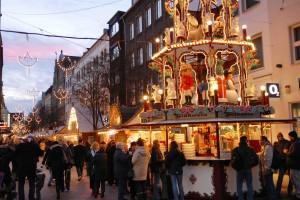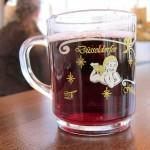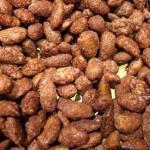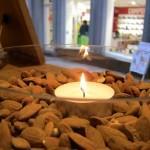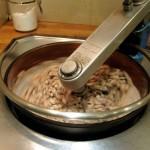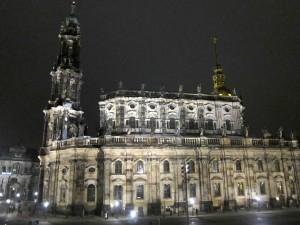 Many would agree that winter’s most glorious aspects are of the culinary variety. Celebratory food and drink that promise the return of light in the depth of chilly darkness differ in every culture, but epicurean indulgence is a common thread. In Germany, Christmas traditions border on magical. Snow blankets much of the landscape, lights sparkle amidst the frost and festive markets sell handmade crafts and ornaments. On a recent trip to Germany, I discovered many of its favorite Yuletide indulgences revolve around food. In a country whose history and legacy is perhaps more complicated then most others, Germans shamelessly embrace their holiday gastronomic traditions and are proud to share them.
Many would agree that winter’s most glorious aspects are of the culinary variety. Celebratory food and drink that promise the return of light in the depth of chilly darkness differ in every culture, but epicurean indulgence is a common thread. In Germany, Christmas traditions border on magical. Snow blankets much of the landscape, lights sparkle amidst the frost and festive markets sell handmade crafts and ornaments. On a recent trip to Germany, I discovered many of its favorite Yuletide indulgences revolve around food. In a country whose history and legacy is perhaps more complicated then most others, Germans shamelessly embrace their holiday gastronomic traditions and are proud to share them.
German cuisine doesn’t get the attention that French and Italian do. The frugal hardships of life are reflected in its hearty, plainspoken dishes. Pork is a mainstay, often enhanced with dumplings or noodles called Spätzle. Like Italy and France, there is no pan-German cuisine. Regional distinctions and characteristics abound, but during the holidays, traditional foods eaten by nearly the entire population predominate.
I started my holiday gourmand getaway in Dresden, the capital city of Saxony. It was almost totally destroyed in 1945, when allied forces mounted a vast bombing raid. Meticulous restoration has brought the city back to its historic former beauty. Its manageable size makes it perfect for walking. The city center lies along the banks of the Elbe, and a stroll will take you by its jewel-like baroque buildings and treasure-laden museums.
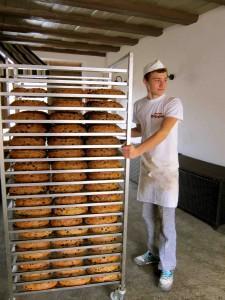
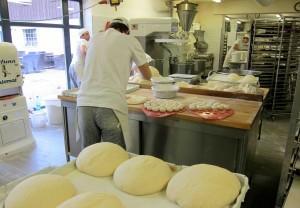
Next stop, Berlin. This cutting-edge city pulses with frenetic energy day and night, but when it comes to edibles, its traditions remain solidly in place. If you are a fan of the dark temptress, Berlin is the home of the largest chocolate shop in the world, Fassbender & Rausch, established in 1863. You could visit this gigantic emporium anytime of year and enjoy its whimsical Willa Wonka atmosphere, but Christmas is extra special. The store is decked out in full seasonal regalia and offers festive holiday treats packaged to perfection. Beautifully presented, delectable confections flood the counters. Truffles, pralines and an assortment of single plantation chocolate bars can be found on the ground floor. These big-on-flavor bars are produced with cocoa beans from a single estate. As delectable as the edibles are, many people come here to view the all-chocolate showpieces, eye-catching renditions of the Brandenburg Gate, the Berlin Reichstag and other historic local buildings, sculpted out of fine quality chocolate.
Head upstairs to the café and you will feast on tempting, chocolate-infused pastries, decadently paired with ultra-rich hot cocoa. The café hosts chocolate themed suppers on select evenings, a worthy splurge that proves almost any dish is refined with a touch of chocolate.
Upstairs is also where you will also find the Chocolate Laboratory. Watch the masterful artistry of chef Chocolatier George Helwig as he creates sweet treats and mingles with customers. Multi-lingual Helwig has worked all over the world, but enjoys the customer interaction that working in this open space allows. His charming and approachable personality makes it easy to ask him any lingering questions you might have on the bean-to-bar process.
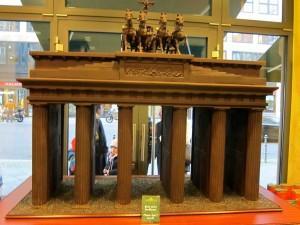
Another market specialty is hot sugared almonds. This Christmas treat is sold at every market, but it is available in a most delicious form at a pocket-sized shop, Gagliardi, in the Old Town. Mrs. Gagliardi sells the traditional sugar roasted almonds as well as vanilla scented, chili pepper and cinnamon-spiced. It is open year-round, so you can sample this winter delicacy anytime, except Monday, when the shop is closed.
Where to stay
In Dresden, I stayed at the clean and comfortable IBIS hotel, located steps from the train station and walking distance from everything. A copious buffet breakfast is included in the modest room rate.
In Berlin, I was enchanted by the Circus Hotel. It is located in the trendy Mitte neighborhood, a top choice for globetrotters and locals alike. This boutique hotel is loaded with low-cost personality. The staff is friendly, helpful and international.
In Düsseldorf, the InterCity Hotel was right near the train station and close to the Old Town. It is sparkling clean and quiet, a winning combination. The breakfast buffet features a selection of hot and cold dishes and excellent coffee. They provide International newspapers with your fresh-squeezed orange juice.
How to get here
Air Berlin flies to Berlin and Dusseldorf non-stop from several gateway cities, including New York, Miami, Fort Myers and Chicago. Business Class features individual pod-style seating for extra privacy and comfort. Fares are very competitive in coach class. They are a member of oneworld, so you will be getting those coveted frequent flyer miles. As an added bonus, they serve Fassbender & Rausch chocolate in-flight, to make it all go down sweet.


